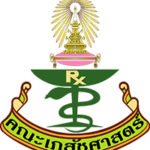Understanding Drug Labels for Improved Health (Part 1)

Exploring Medicine with Chula Pharmacy: Understanding Drug Labels for Improved Health (Part 1)
Have you ever taken a moment to scrutinize the labels on your medicine packages? Whether receiving medication from a hospital or purchasing it from a pharmacy, these labels carry vital information. Beyond merely stating the drug's name and strength, they provide crucial details such as usage instructions. For instance, consider Amoxicillin 500 milligrams, an antibiotic: "Take 1 tablet three times daily, every 8 hours." Moreover, they often include directives like "Continue daily until completion," essential for combating infectious diseases effectively.
Such additional instructions, termed "auxiliary labels," are indispensable for ensuring optimal drug efficacy and user safety. It's imperative for consumers to diligently peruse and adhere to these labels to grasp their medication fully.
In the realm of antibiotics, vital advice often revolves around the necessity of continuous daily intake until the course is complete. Some antibiotics necessitate consumption on an empty stomach for optimal absorption, typically specified on the label. This might entail taking the medication approximately 30 to 60 minutes before meals to avoid interference with digestion. If one forgets a dose and has already eaten, they may need to wait 1-2 hours until their stomach is empty again to consume the medication.
While managing medications taken once or twice daily might prove manageable, those requiring more frequent intake pose challenges. Timing becomes crucial; overlooking dosages due to meal schedules can disrupt the regimen. For instance, if a morning dose should precede breakfast but is missed, coordinating subsequent doses becomes intricate, requiring careful planning to avoid overlapping doses.
Patients often query appropriate dosing before bedtime, particularly concerning meal timing. If bedtime aligns with a sufficiently empty stomach, medication can be taken promptly. However, those with late dinners or early bedtimes may face dilemmas. Understanding the rationale behind pre-meal dosing is essential, as lifestyle habits can impact drug efficacy. Adjustments might be necessary, warranting consultation with healthcare professionals to explore alternative medications suited to individual lifestyles.
In the domain of antibiotics, specific drugs may necessitate post-meal ingestion to optimize absorption. Certain foods, particularly those high in fat content, facilitate better assimilation of medication into the body.
Labels may caution against concurrent consumption of certain substances like milk, antacids, or iron, which can impede drug absorption, rendering treatment ineffective. Additionally, inadequate dissolution of some medications underscores the importance of ample water intake to aid their elimination from the body and prevent urinary tract complications.
Interactions with alcohol represent another critical consideration, as exemplified by Metronidazole's adverse reactions when combined with alcohol. Users may experience nausea, dizziness, or vomiting due to inhibited alcohol metabolism. Consequently, abstaining from alcohol during medication usage is advisable.
In pursuit of optimal medication utilization and safety, thorough label comprehension is indispensable. Each medication comes with unique precautions and instructions, underscoring the need for careful attention and adherence to label guidance.
Assoc. Prof. Dr. Nattada Areepiam and Asst. Prof. Dr. Bodin Tiwasuwan
Faculty of Pharmacy Chulalongkorn University
เราใช้คุกกี้เพื่อพัฒนาประสบการณ์การใช้งานเว็บไซต์ของคุณให้ดียิ่งขึ้น คุณสามารถจัดการความเป็นส่วนตัวของคุณได้เองโดยคลิกที่ ตั้งค่า
